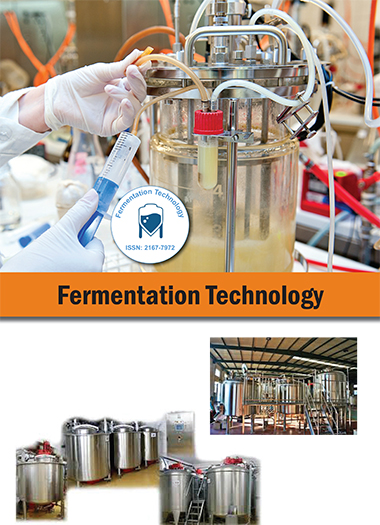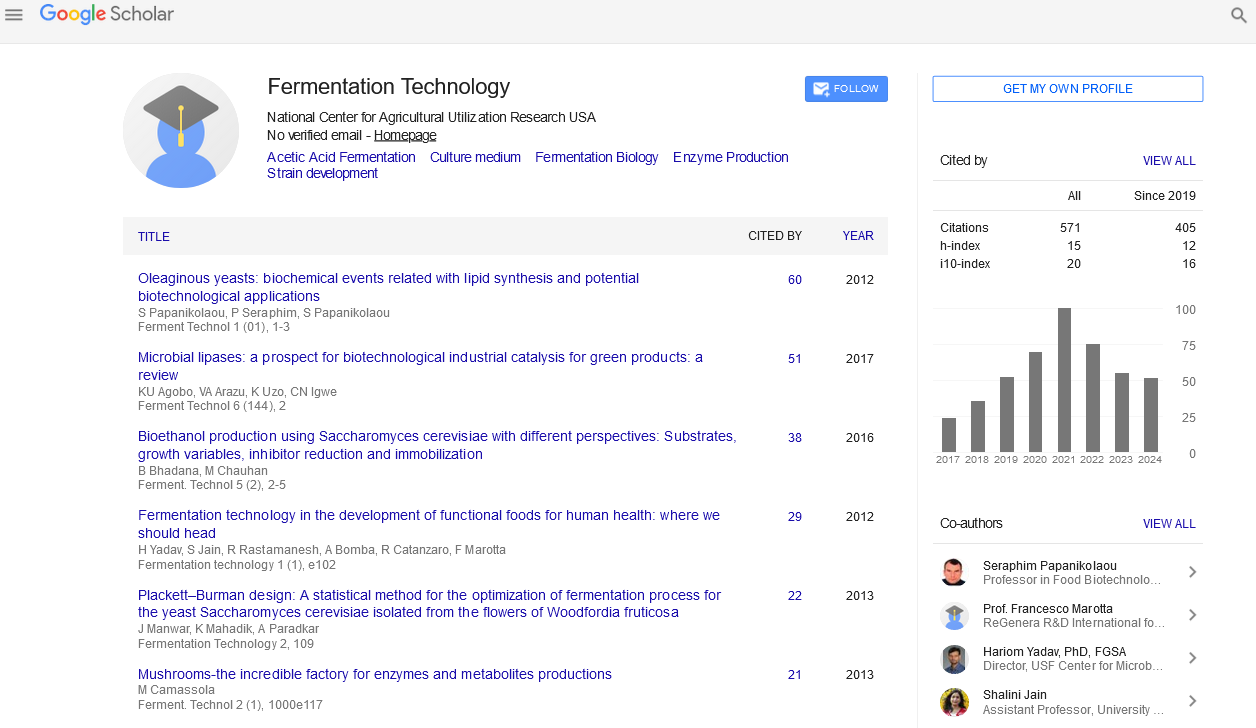Indexed In
- Open J Gate
- Genamics JournalSeek
- Access to Global Online Research in Agriculture (AGORA)
- RefSeek
- Hamdard University
- EBSCO A-Z
- OCLC- WorldCat
- Publons
Useful Links
Share This Page
Journal Flyer

Open Access Journals
- Agri and Aquaculture
- Biochemistry
- Bioinformatics & Systems Biology
- Business & Management
- Chemistry
- Clinical Sciences
- Engineering
- Food & Nutrition
- General Science
- Genetics & Molecular Biology
- Immunology & Microbiology
- Medical Sciences
- Neuroscience & Psychology
- Nursing & Health Care
- Pharmaceutical Sciences
Commentary Article - (2023) Volume 12, Issue 1
Submerged Fermentation: The Versatile Process for Industrial Biotechnology
Alex David*Received: 03-Mar-2023, Manuscript No. FMT-23-20922; Editor assigned: 06-Mar-2023, Pre QC No. FMT-23-20922(PQ); Reviewed: 21-Mar-2023, QC No. FMT-23-20922; Revised: 28-Mar-2023, Manuscript No. FMT-23-20922(R); Published: 07-Apr-2023, DOI: 10.4172/2167-7972.23.12.165
Description
Submerged fermentation is a process in which microorganisms are grown in a liquid medium for the production of various bio products such as antibiotics, enzymes, organic acids, and biofuels. This process has gained significant importance in industrial biotechnology due to its high productivity and scalability. In this article, we will discuss the basics of submerged fermentation, its types, advantages, disadvantages, and applications. Submerged fermentation is a process in which microorganisms are grown in a liquid medium that contains all the necessary nutrients required for their growth and metabolism.
The liquid medium is typically agitated using mechanical or airdriven methods to provide oxygen and nutrients to the microorganisms. The process is carried out in a bioreactor, which is a closed vessel designed to maintain optimal growth conditions for the microorganisms. The bioreactor provides precise control over temperature, pH, dissolved oxygen, and other parameters that affect microbial growth and metabolism.
Types of submerged fermentation
Batch fermentation: In batch fermentation, a fixed amount of medium is added to the bioreactor, and the microorganisms are allowed to grow until the nutrients are depleted or the desired product is produced. The fermentation is then stopped, and the product is harvested. This type of fermentation is suitable for the production of high-value products that require precise control over the growth conditions.
Continuous fermentation: In continuous fermentation, a continuous supply of medium is added to the bioreactor, and the product is continuously harvested. This type of fermentation is suitable for the production of low-value products that require high productivity.
Advantages of submerged fermentation
Submerged fermentation provides a high yied of the desired product due to its precise control over growth conditions.Submerged fermentation can be easily scaled up for industrial production due to its closed system and efficient use of resources. Submerged fermentation is a cost-effective process as it requires minimal energy and resources compared to other fermentation processes.
Disadvantages of submerged fermentation
The equipment required for submerged fermentation is expensive and requires skilled operators to operate and maintain. Submerged fermentation is susceptible to contamination, which can affect the yield and purity of the product.
Applications of submerged fermentation
Submerged fermentation is widely for the production of antibiotics such as penicillin, sterptomycin and erythromycin. Submerged fermentation is used for the production of various enzymes such used for the production of various enzymes such as amylase, cellulose, and protease. Organic acids such as citric acid, lactic acid, and acetic acid.
Submerged fermentation is a widely used process in industrial biotechnology for the production of various bio products such as antibiotics, enzymes, organic acids, and biofuels. This process provides a high yield of the desired product due to its precise control over growth conditions and scalability. However, it also has a few disadvantages, such as high equipment cost and contamination risk, which must be considered. Despite these challenges, submerged fermentation has numerous applications and is expected to play an increasingly important role in industrial biotechnology in the future.
Citation: David A (2023) Submerged Fermentation: The Versatile Process for Industrial Biotechnology. Ferment Technol. 12:165.
Copyright: © 2023 David A. This is an open-access article distributed under the terms of the Creative Commons Attribution License, which permits unrestricted use, distribution, and reproduction in any medium, provided the original author and source are credited.

